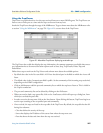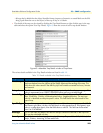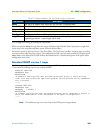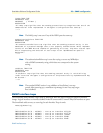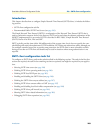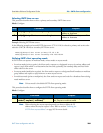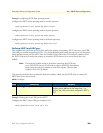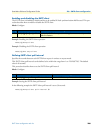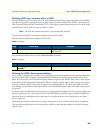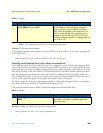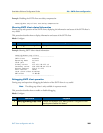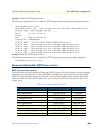
SNTP client configuration task list 285
SmartWare Software Configuration Guide 26 • SNTP client configuration
Example: Configuring SNTP client operating mode
Configures the SNTP client operating mode to unicast operation
node(cfg)#sntp-client operating-mode unicast
Configures the SNTP client operating mode to anycast operation
node(cfg)#sntp-client operating-mode anycast
Configures the SNTP client operating mode to multicast operation
node(cfg)#sntp-client operating-mode multicast
Defining SNTP local UDP port
The communication between an SNTP client and its the primary or secondary SNTP time server uses UDP.
The UDP port number assigned to SNTP is 123, which should be used in both the source port (on the Smart-
Node) and destination port (on SNTP time server) fields in the UDP header. The local port number, which
the SNTP client uses to contact the primary or secondary SNTP time server in unicast mode, has to be
defined.
Note The local port number setting is used when contacting the SNTP time
server. The SNTP time server will send its reply to the SNTP client (Smart-
Node) using the same port number as used in the request. The local port
number is set to 123 by default.
This procedure describes how to define the local port number, which uses the SNTP client to contact the
SNTP time server, unicast mode
Mode: Configure
Example: Defining the local UDP port for SNTP
Configures the SNTP client UDP port number to 123
node(cfg)#sntp-client local-port 123
Step Command Purpose
1 node(cfg)# sntp-client local-port number Specifies the SNTP local UDP port number. The port
number can be defined in the range from 1 to
65535. The UDP port number assigned to SNTP is
123.



